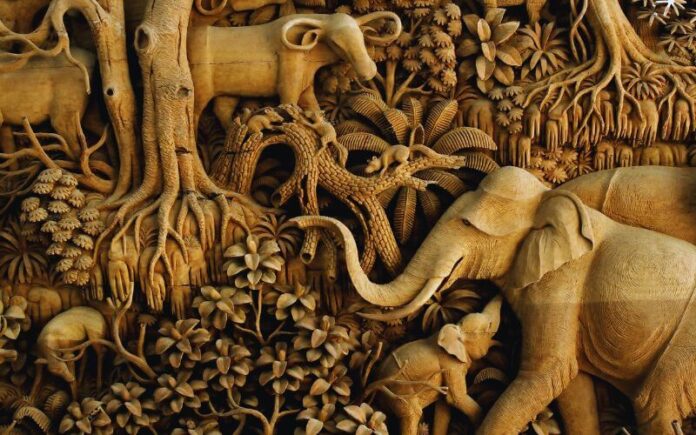Laser engraving on wood is a craft that blends technology and creativity, transforming ordinary wooden surfaces into intricate works of art. This process, which involves using a laser to etch designs onto wood, has gained immense popularity among hobbyists, artisans, and businesses alike.
It offers unparalleled precision, versatility, and the ability to create detailed designs that would be challenging to achieve with traditional woodworking tools. This article explores the art of laser engraving on wood, delving into the techniques, materials, applications, and the artistic potential of this modern craft.
Understanding Laser Engraving
Laser engraving uses a focused beam of light to burn or vaporize the surface of the wood, creating a permanent mark. The laser’s intensity and speed can be adjusted to achieve different depths and effects, from light surface etchings to deeper cuts. The process is controlled by computer software, which allows for high precision and the ability to reproduce complex designs with ease.
Materials and Equipment
Wood Types
- Softwoods: Pine, cedar, and fir are easy to engrave but may produce less defined details due to their softer texture.
- Hardwoods: Oak, maple, cherry, and walnut provide excellent results with crisp details and fine lines, thanks to their dense and uniform grain.
- Plywood and MDF: These are also popular choices for laser engraving due to their affordability and consistent surface.
Laser Engravers
- CO2 Lasers: These are the most common type of laser engravers used for woodworking. They offer a good balance of power and precision, making them suitable for both hobbyists and professionals.
- Diode Lasers: Generally less powerful than CO2 lasers, diode lasers are more affordable and suitable for small-scale projects.
- Fiber Lasers: Primarily used for engraving metals, fiber lasers are less common for wood but can be used for certain types of projects that require high precision.
Techniques and Tips
- Design Preparation: Use design software such as Adobe Illustrator, CorelDRAW, or specialized laser engraving software like LightBurn to create or convert your designs into vector formats. These formats are essential for the laser to interpret the paths it needs to follow.
- Setting Parameters: Adjust the laser’s power, speed, and frequency settings based on the type of wood and the desired effect. For deeper engravings, lower speeds and higher power are necessary. Conversely, for fine surface etchings, higher speeds and lower power work best.
- Test Runs: Always conduct test runs on scrap pieces of wood to fine-tune your settings and ensure the design will appear as intended. This practice helps avoid mistakes on the final piece and allows for adjustments to be made.
- Focus and Alignment: Properly focusing the laser and aligning the wood on the bed are crucial for achieving sharp and accurate engravings. Many modern laser engravers come with auto-focus features to simplify this process.
Applications of Laser Engraving on Wood
The versatility of laser engraving on wood opens up a vast array of applications:
Personalized Gifts
Items like cutting boards, photo frames, and wooden plaques can be personalized with names, dates, and unique designs, making them ideal gifts for special occasions.
Home Décor
Custom wooden signs, wall art, and decorative panels add a unique touch to any home interior, showcasing both the natural beauty of wood and the intricacy of laser-engraved designs.
Business Products
Companies use laser engraving for branding purposes, creating custom-engraved promotional items, business cards, and office signage.
Art and Craft Projects
Artists and crafters utilize laser engraving to produce detailed and precise artwork, from intricate patterns to realistic portraits.
The Artistic Potential
Laser engraving on wood is not just a mechanical process; it’s an art form. The ability to transform a plain piece of wood into a detailed and personalized piece of art is what makes this craft so appealing. The technology allows artists to push the boundaries of their creativity, experimenting with different styles, textures, and techniques.
The contrast between the engraved areas and the natural wood grain adds depth and character to each piece. Artists can combine laser engraving with other woodworking techniques, such as carving or painting, to create multi-dimensional artworks.
Conclusion
The art of laser engraving on wood combines precision technology with creative expression, offering endless possibilities for customization and design. Whether you’re a hobbyist looking to personalize your creations or a professional seeking to produce high-quality, intricate designs, laser engraving provides the tools to bring your visions to life.
As technology continues to advance, the potential for innovation and artistic exploration in this field will only grow, making laser engraving an exciting and ever-evolving craft.


